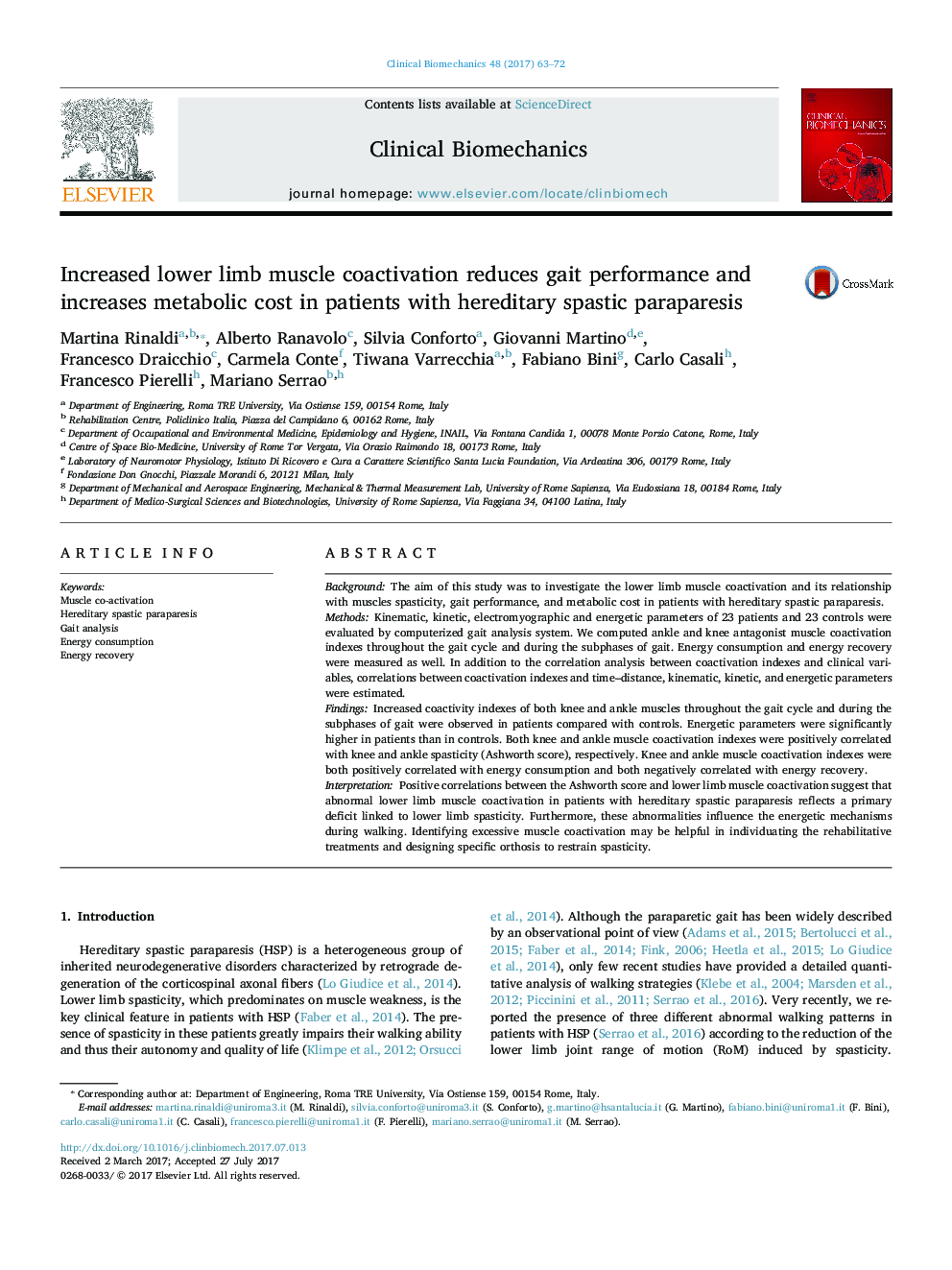| Article ID | Journal | Published Year | Pages | File Type |
|---|---|---|---|---|
| 5707009 | Clinical Biomechanics | 2017 | 10 Pages |
Abstract
Positive correlations between the Ashworth score and lower limb muscle coactivation suggest that abnormal lower limb muscle coactivation in patients with hereditary spastic paraparesis reflects a primary deficit linked to lower limb spasticity. Furthermore, these abnormalities influence the energetic mechanisms during walking. Identifying excessive muscle coactivation may be helpful in individuating the rehabilitative treatments and designing specific orthosis to restrain spasticity.
Keywords
Related Topics
Health Sciences
Medicine and Dentistry
Orthopedics, Sports Medicine and Rehabilitation
Authors
Martina Rinaldi, Alberto Ranavolo, Silvia Conforto, Giovanni Martino, Francesco Draicchio, Carmela Conte, Tiwana Varrecchia, Fabiano Bini, Carlo Casali, Francesco Pierelli, Mariano Serrao,
